Venice is the capital of the Veneto region, located in the northeastern part of Italy’s “boot,” right at the northernmost tip of the Adriatic Sea. It’s one of the most famous “water cities” in the world. Nestled between the Po River and the Piave River, a saltwater lagoon surrounds 118 islands, with 117 canals crisscrossing between them, and 401 bridges connecting it all. On top of that, there’s an artificial peninsula, and this little area of just 6.9 square kilometers hosts a staggering 28 million tourists every year. Known as the “Pearl of the Adriatic,” Venice is one of the world’s most iconic travel destinations. Russian poet Fet described it in his short poem “Venetian Night,” saying, “The moonlight shines bright, spreading over the marble slabs; St. Mark’s Lion dozes off, and the Queen of the Sea sleeps soundly.”
To trace the history of this city, we go back to 451 AD, when a group of refugees from Padua in northern Italy fled here to escape pirates and war. They slowly began to build a community. In 687 AD, the Republic of Venice was founded, and British Romantic poet Wordsworth called it “the firstborn of freedom.” In the midst of feudalism, Venice was one of the few city-states that managed to keep a republican system. By the 8th century, Venice’s trade began to flourish. Thanks to its convenient waterways, Venice became a hub for trade between Italy and Constantinople, dealing in wheat, wine, timber, silk, spices, and more. The city became wealthy, which naturally led to its growth and development.
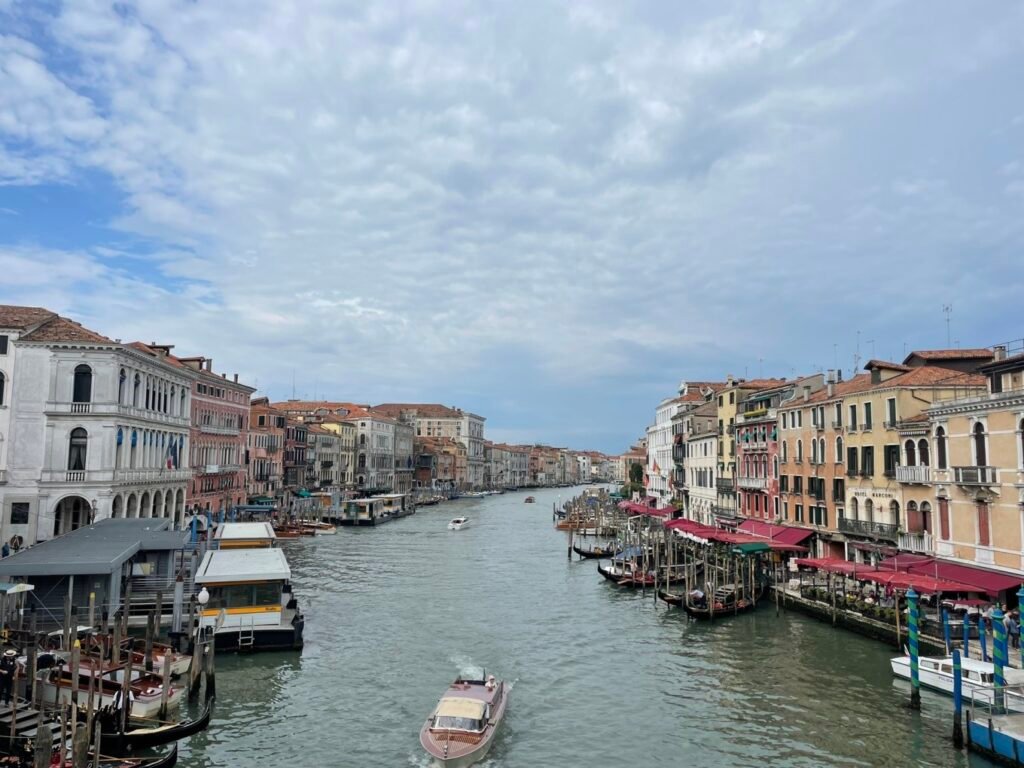
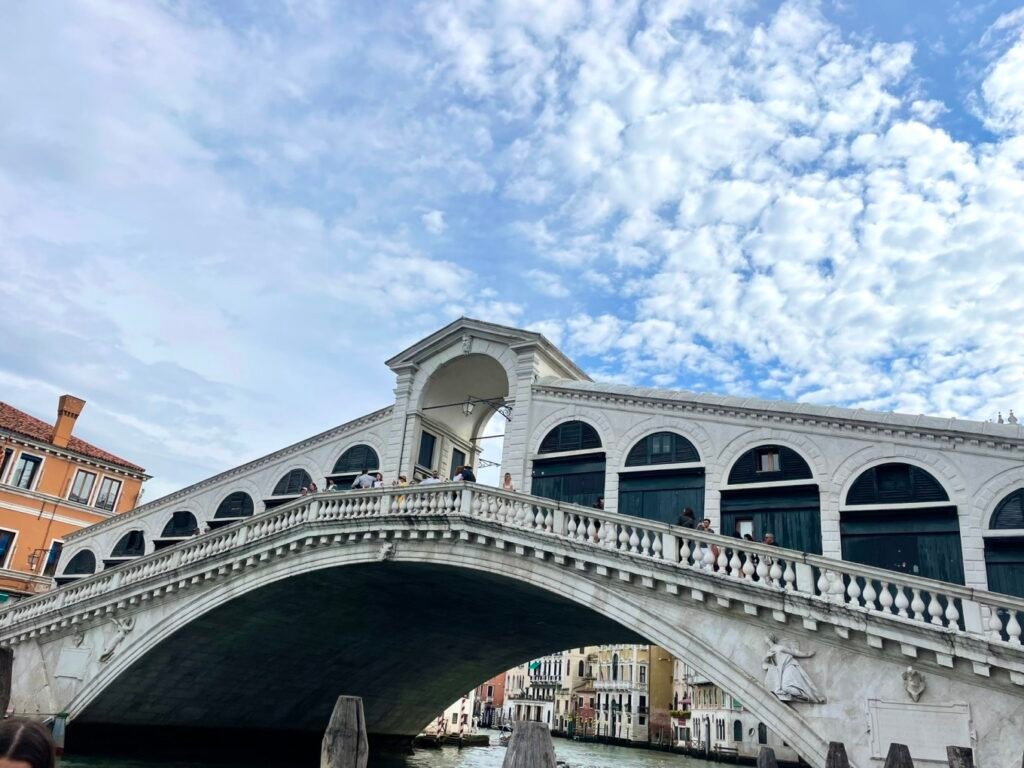
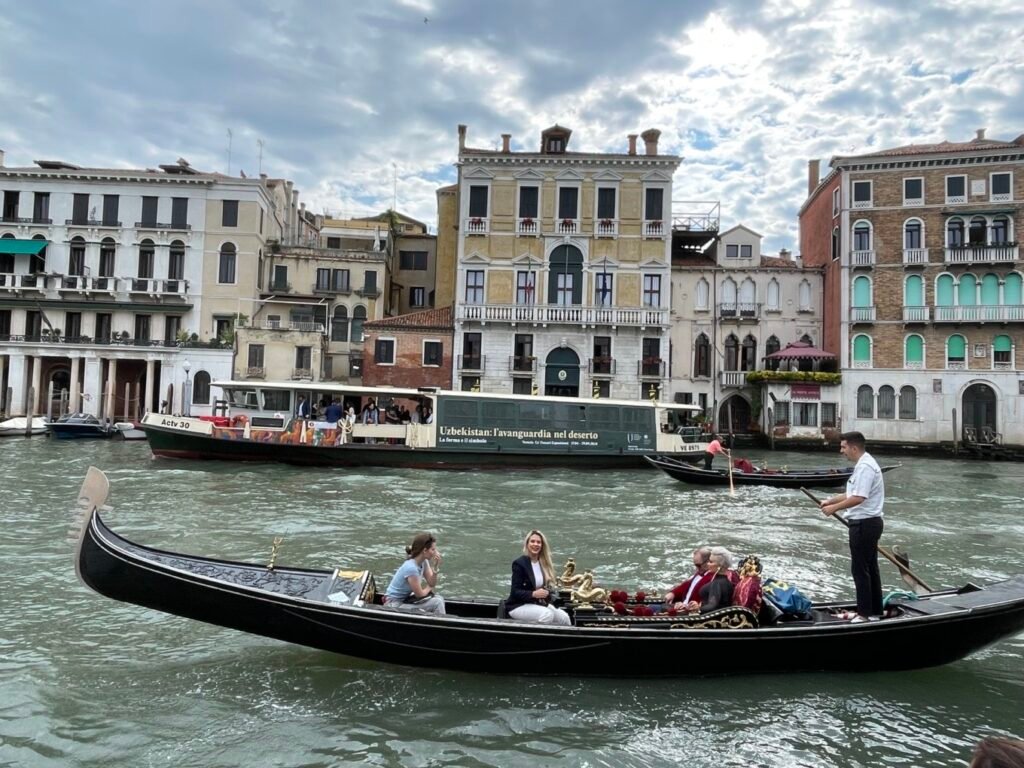

Venice has so many little bridges—crescent bridges, half-circle arches, half-moon bridges, convex bridges—all sorts of shapes. Apparently, there are over 400 of them! These bridges wind through the streets and alleys, creating yet another unique view of Venice. The houses along the Grand Canal look bright and colorful from the outside, but the ones in the smaller canals and alleyways seem older and more run-down, with peeling walls and faded exteriors. I imagine if the waterproofing inside these houses isn’t done well, it must be pretty damp in there.
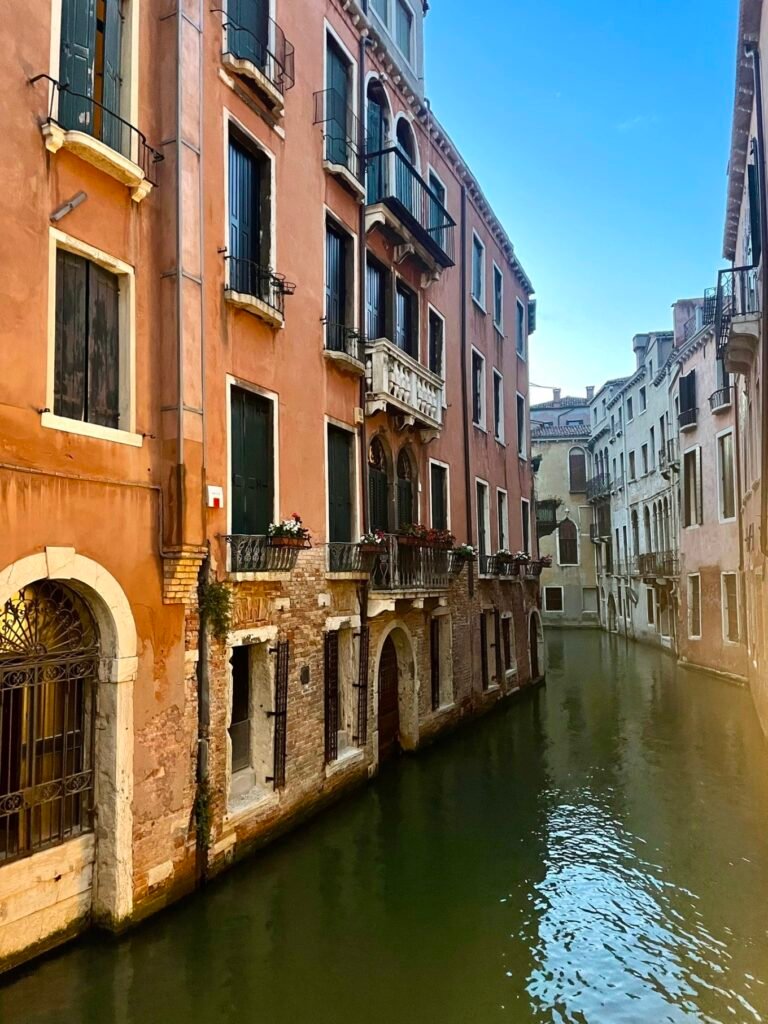
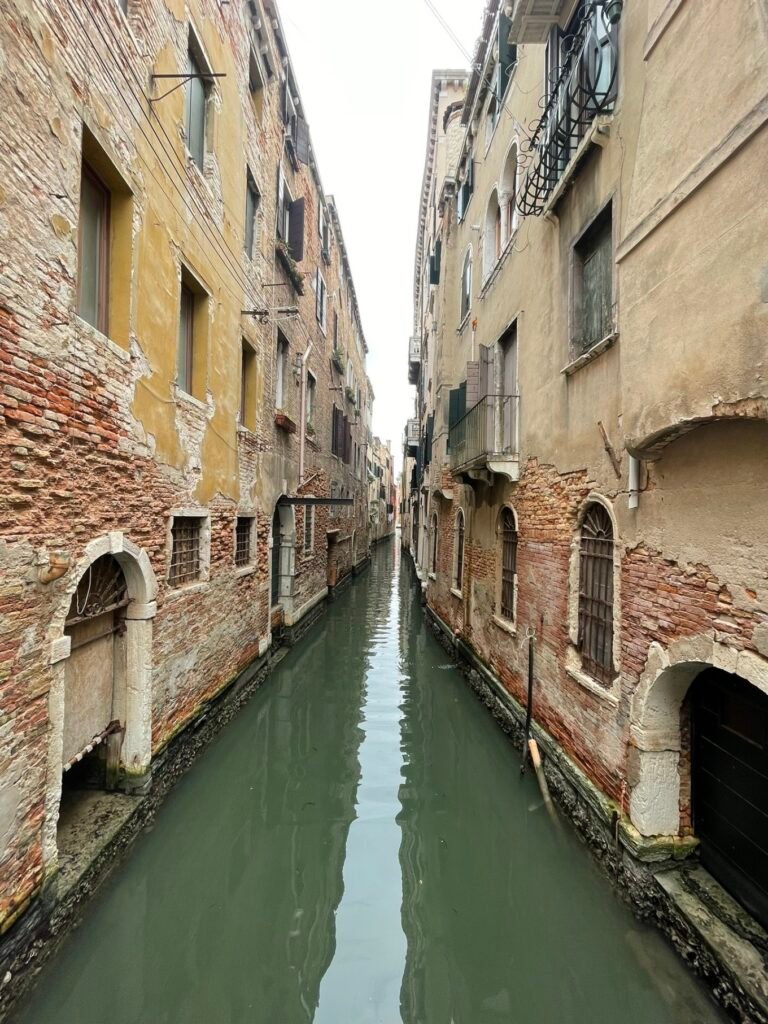
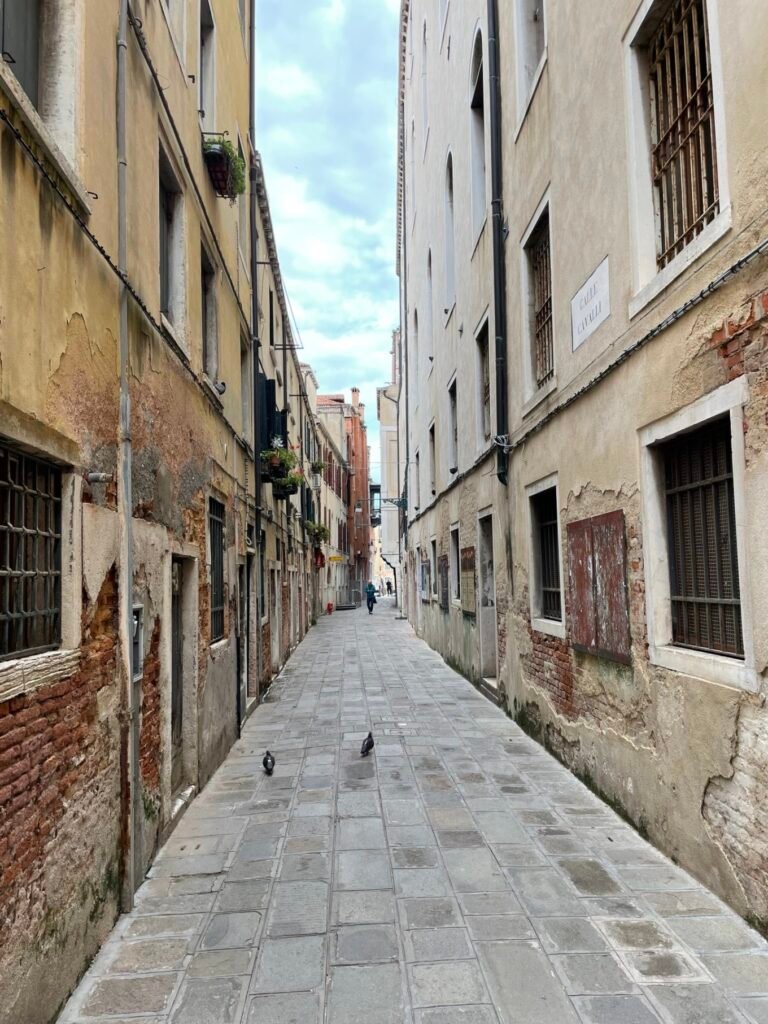
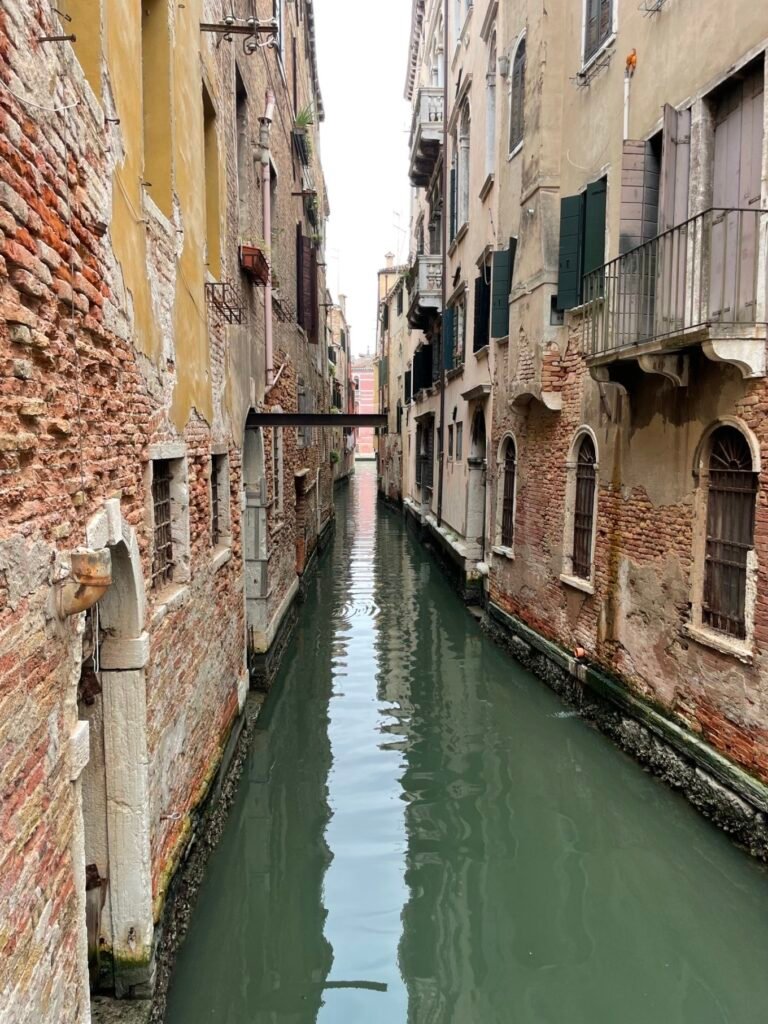
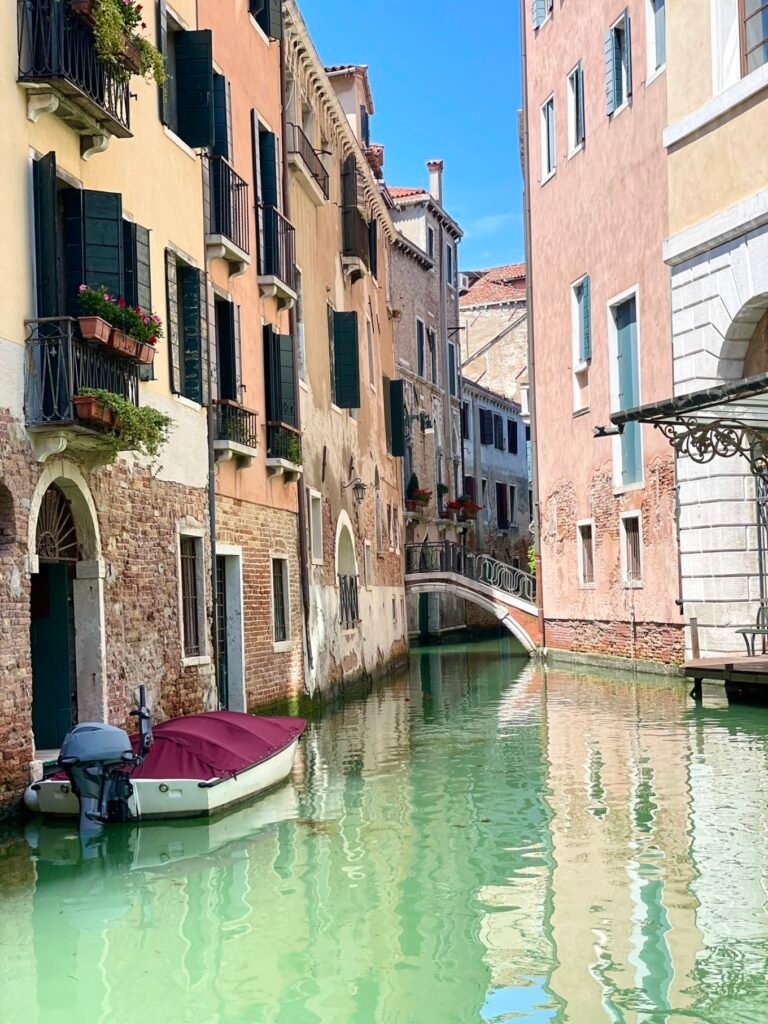
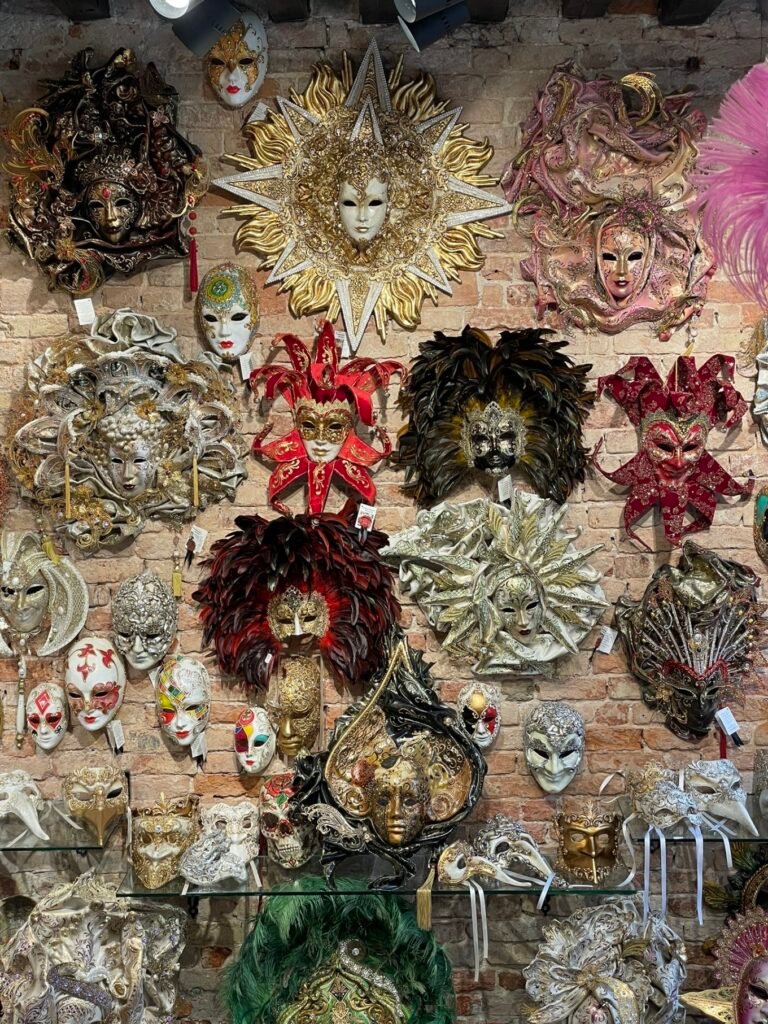
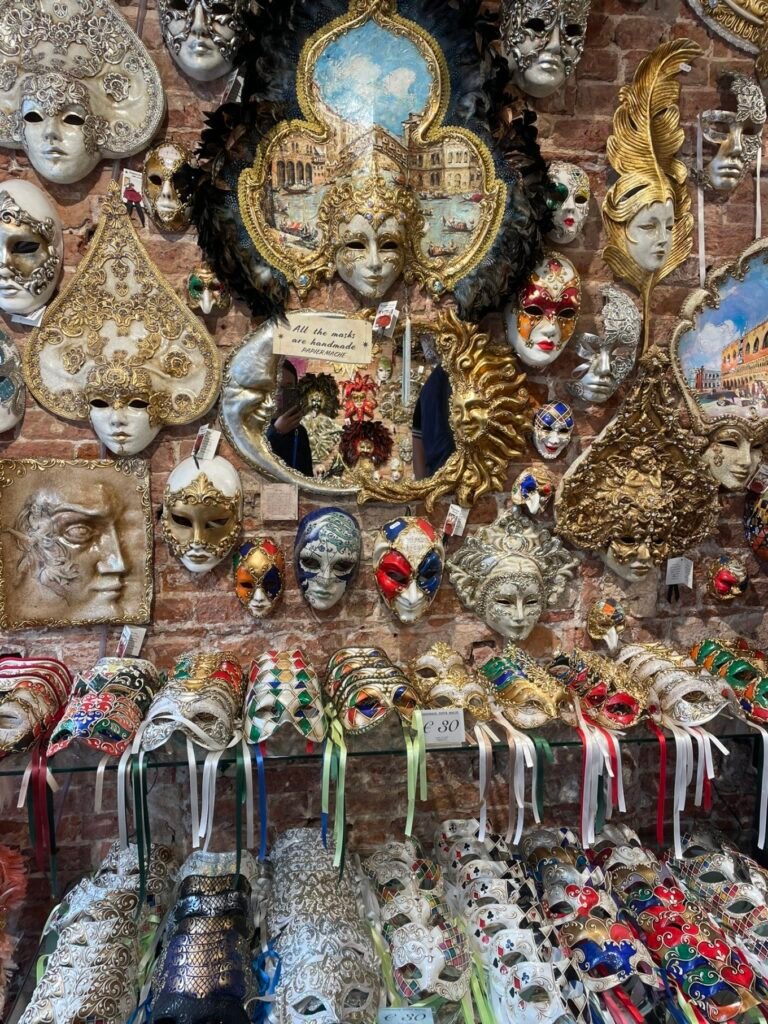
As I wandered around, I ended up back at the Fish Market (Mercato del Pesce), which is actually located in an old colonnade right next to the Rialto Bridge. This market has been open since 1907 and serves as both a fish market and a vegetable market. I can’t resist seafood, especially with such a wide variety and fresh options here, plus it’s cheap! I strongly recommend staying in a place with a kitchen so you can cook your own seafood. They have crabs, lobsters, scallops, abalone, octopuses, squids, salmon, tuna, large shrimp, and many other types of fish whose names I don’t even know. The prices are so reasonable—premium salmon is €28 per kilogram, tuna and shrimp the size of your palm are €32 per kilogram. I also picked up a bit of cauliflower and a head of lettuce at the vegetable stall for €4.20, and some prosciutto at the supermarket for €6.80.
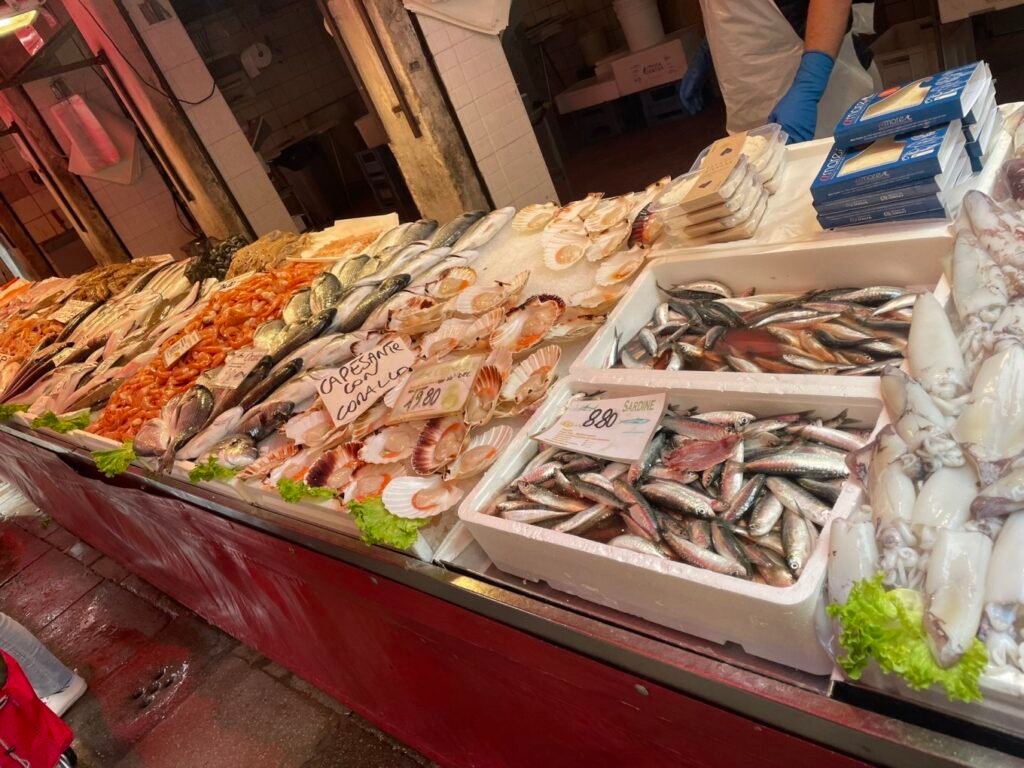
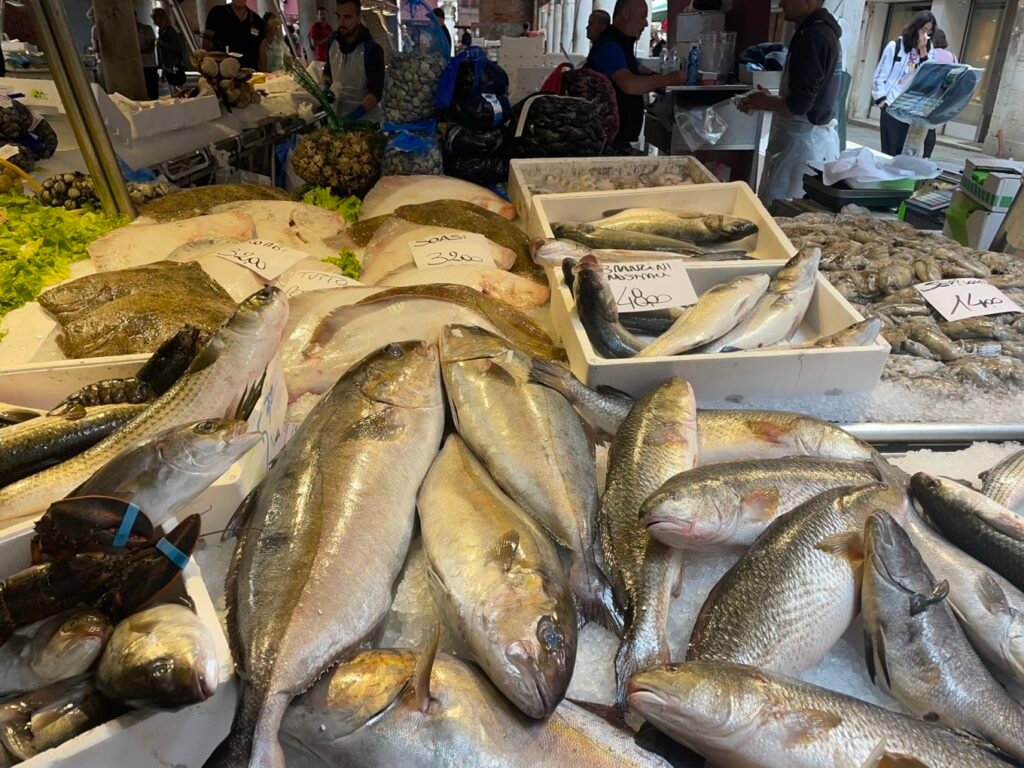

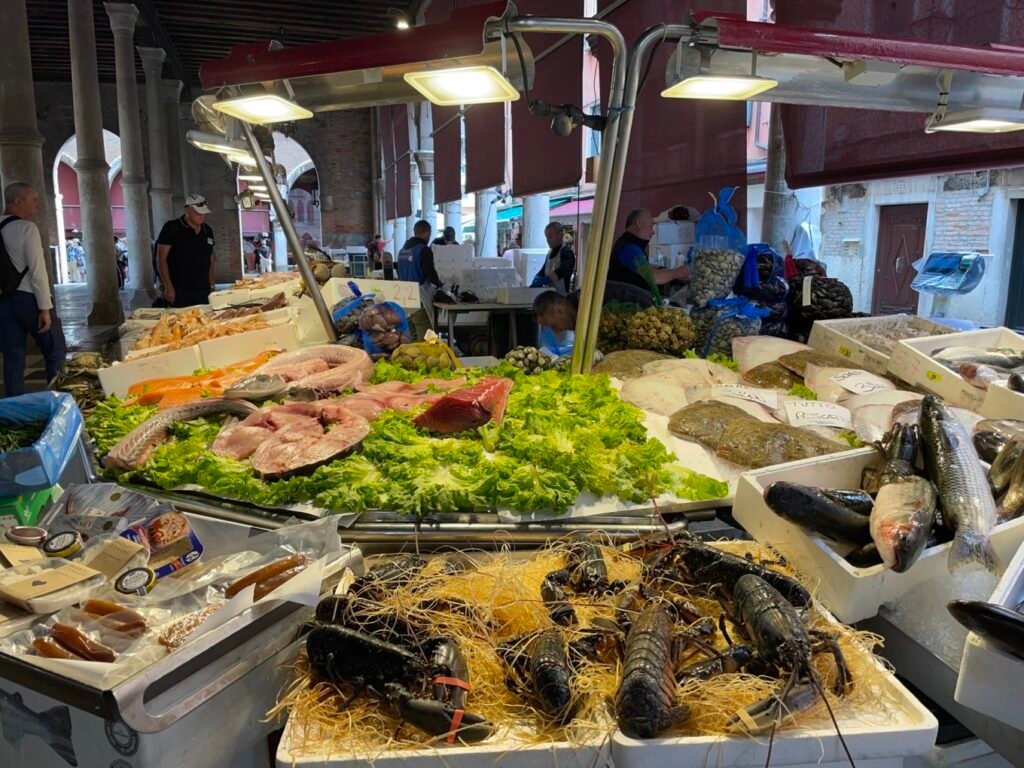
The Church of Santa Maria della Salute is at the tip of the “S” bend of the Grand Canal, offering a broad view. Its stunning beauty has long inspired artists like Canaletto and Guardi. Standing on a vaporetto, as the big dome gets closer, it feels like we’re not floating on the water but that the white church itself is swaying with the waves—a truly magical experience.

The Church of Santa Maria della Salute, a “B-level” church in Venice, is a classic example of Baroque architecture. Designed in 1631 and completed in 1687, it was built as a vow to the Virgin Mary after Venice suffered devastating plagues. The term “plague” is terrifying—historically, Europe experienced three major plagues, with the second one from the mid-14th century lasting around 300 years, wiping out a third to half of Europe’s population. Venice was hit hard during this period; in 1347-1348, it lost 3/5 of its population, and during 1575-1576, about a quarter died, including Titian. The 1630-1631 plague alone claimed 45,000 lives, about a third of the population. When the plague struck in 1630, Venetians prayed to the Virgin Mary, vowing to build a church in her honor if she saved them. After the plague ended in 1631, the Republic decided to fulfill this vow. The challenge was to find an architect who could keep costs reasonable and make a strong impression. The 33-year-old Baldassare Longhena won the project, designing and building the church. It took 56 years to complete, finishing four years after Longhena’s death. The church was named “Salute” to honor and praise the Virgin Mary for her protection. Venetians celebrate this every year on November 21st, with the church’s main doors opening only on this day for people to enter holding lit candles.


The church’s base is octagonal, topped with a gray-blue dome, a smaller dome at the back, and a pair of bell towers. Building on the tip of the Grand Canal’s “S” bend posed challenges. It’s said that 170,000 wooden piles were used for the foundation, which faced issues like subsidence and wall support. Longhena invented spiral buttresses to stabilize the dome. The church’s facade has a set of stairs, partly to account for possible rising water levels and partly to enhance its grandeur. When we visited, the facade and side entrance were under renovation, so we didn’t get to see its full splendor.


The cathedral is free to enter. Inside, the large dome is supported by eight tall Corinthian columns, each topped with a statue of a saint. The large columns divide the space into seven areas: one for the main entrance, one for the main altar, and five smaller chapels. The floor is covered with geometric marble patterns, giving a Renaissance sense of order.


The Church of the Redeemer (Chiesa del Redentore) was built between 1577 and 1592 on Giudecca Island. This church, also linked to the Black Death, was erected to commemorate the end of the 1575-1576 plague. In 1577, the Venetian Republic decided to build this church as a thank-you for the plague’s passing.


The church is constructed from white Istrian stone, giving its facade a clean, minimalist look. The facade features triangular pediments stacked in two layers: the large triangle has a statue of the Redeemer at its peak, with angels on each corner of the roof, and saints on the outer corners of the smaller pediments. The Corinthian columns come in various forms—round, square, and double faux columns on the outer sides—to enhance the perspective with differences in height and thickness. The main entrance is flanked by niches and statues of saints. Aside from the Corinthian capitals, the facade is fairly simple with minimal ornamentation.


Inside, the impressively wide nave stands out. It used to host the grand annual procession on the third Sunday of July, known as the Feast of the Redeemer, welcoming the Doge of Venice. The interior decoration is sparse, mirroring the simplicity of the facade. It’s mostly white and very bright, thanks to several large semicircular windows made of highly transparent crystal (Cristallo), a specialty of Murano. Palladio used natural light to enhance the sense of sanctity on the Corinthian columns and arches.
The main altar features bronze statues of saints, with Christ on the cross in the center, topped with a large bronze crown. The lower base has two saints looking up at Christ, forming a stable triangular structure. The dome’s top has a painted statue of the Redeemer holding a cross, with a fluttering cloth representing Jesus’ burial shroud.
The altarpieces in the side chapels include “The Birth of Christ” by Francesco Bassano, “The Ascension of Christ” by Tintoretto (which I interpret as Christ’s resurrection), and “The Humiliation of Christ.”


Giudecca Island is right next to San Giorgio Maggiore Island, just a quick boat ride of three to five minutes. However, waiting for the boat took nearly twenty minutes. Thankfully, the breeze by the canal was quite pleasant. Sitting in the shade, enjoying the wind, and watching the various boats go by was pretty relaxing.


San Giorgio Maggiore (Basilica di San Giorgio Maggiore) is one of Andrea Palladio’s masterpieces from his later years.

Early on, San Giorgio Maggiore Island was probably a private island. The first church dedicated to St. George dates back to the 8th or 9th century. In 982, the entire island was donated to a Benedictine monk, who built the San Giorgio Maggiore Monastery next to the church. Palladio began constructing the church in 1566. By the time he died in 1580, the church was still unfinished, and it was completed in 1610 by his student, Vincenzo Scamozzi (1548–1616), following Palladio’s original designs. Similarly, Palladio’s last project, the Teatro Olimpico in Vicenza, began in 1580, the year of his death, with only the portico and stage completed. Scamozzi continued and finished the work. Scamozzi published his “L’Architettura” in 1615, a year before his death.


The church’s facade is made up of two intersecting triangular pediments on the upper part and niches with columns on the lower part. The niches contain statues of St. George and St. Stephen, along with busts of two Venetian doges. Four robust Corinthian columns run through the upper and lower sections. The roof features five statues of saints, arranged similarly to those on the Church of the Redeemer. The central part of the building is a round dome, cleverly incorporating elements from ancient Greek temples, such as entrance porticos, triangular pediments, and the Pantheon’s dome. This design reflects Palladio’s revival of ancient Roman architecture.


In 828 AD, Venetian merchants brought the remains of St. Mark back to Venice, and the construction of St. Mark’s Basilica (Basilica di San Marco) began the following year. St. Mark’s tomb is located beneath the main altar of the church. The full name of the church is “The Patriarchal Cathedral Basilica of Saint Mark.” The current church was rebuilt between 1043 and 1071, reflecting the Byzantine architectural style popular at that time. The floor plan is a Greek cross, a classic Byzantine church layout. Both the interior and exterior of the church feature many Byzantine-style mosaics. It was the largest church in medieval Europe and is a classic example of Venetian architectural art. Over time, additional constructions have incorporated various architectural styles, including Gothic, Islamic, Renaissance, and Baroque. The facade features five Islamic-style onion domes, Gothic spires, Byzantine gold mosaics and sail vaults, Renaissance railings, and ornate Baroque decorations. The church houses art collections from around the world. In 1075, the Venetian doge decreed that every Venetian returning home from abroad should bring treasures to adorn St. Mark’s Basilica, and many Venetian nobles and wealthy merchants took pride in bringing back and donating treasures.


The main facade of the church has five ornate semi-circular arches, completed gradually in the 17th century. Above the entrance arches are five mosaic panels depicting scenes from St. Mark’s life, including the return of his body from Constantinople, the arrival of the body in Venice, the Last Judgment, the glorification of St. Mark, and the transport of St. Mark to the basilica. The golden mosaics shine brilliantly in the sunlight. Above the central arch on the front, there are four bronze horses. The originals, which date back to the 4th century BC, are housed inside the church. The horses were brought to Venice from Constantinople (now Istanbul, Turkey) in 1204. They were later taken to Paris by Napoleon and placed atop the Arc de Triomphe du Carrousel in front of the Louvre. After the Battle of Waterloo in 1815, the trophies were reclaimed, and the four bronze horses returned to Venice.


Walking through Venice, you’ll notice something unusual: not only are walls rare, but there aren’t even any city walls, which sets it apart from most ancient European cities. Castles and city walls were basically the standard features of urban architecture during the Middle Ages and the Renaissance.
But as I crossed the Rialto Bridge and saw several cargo boats docked along the piers, it all made sense. Venice was a maritime trade power, focused primarily on business. When long-distance fleets returned, their goods were cleared at the customs house in the San Marco inner harbor along the Grand Canal. Afterward, the cargo was loaded onto smaller boats, which sailed along the canals, delivering goods to shops and markets. Merchants’ homes doubled as both docks and warehouses, so the entrances had to be boat-friendly. These open doors not only made unloading easy but also welcomed business partners from all over the world. Whether the locals were really the usurers Shakespeare wrote about is up for debate, but their business-savvy attitude is definitely something to admire.
The merchant’s touch is evident in every corner of this city. Business, after all, is about exchange, and Venice’s openness and inclusive spirit are reflected in its urban design. Its unique geography also made it a gateway between East and West. As a result, Byzantine columns, Persian stone carvings, Gothic spires, and Islamic patterns are all woven together into the city’s landscape, floating between water and sky. And the Venetians, with their keen eye for style, took these architectural elements and decked them out with vibrant colors and ornate decorations. The whole city feels like a jewelry box, crammed with all kinds of gems and trinkets, a mix of gaudiness, joy, and a childlike charm.


